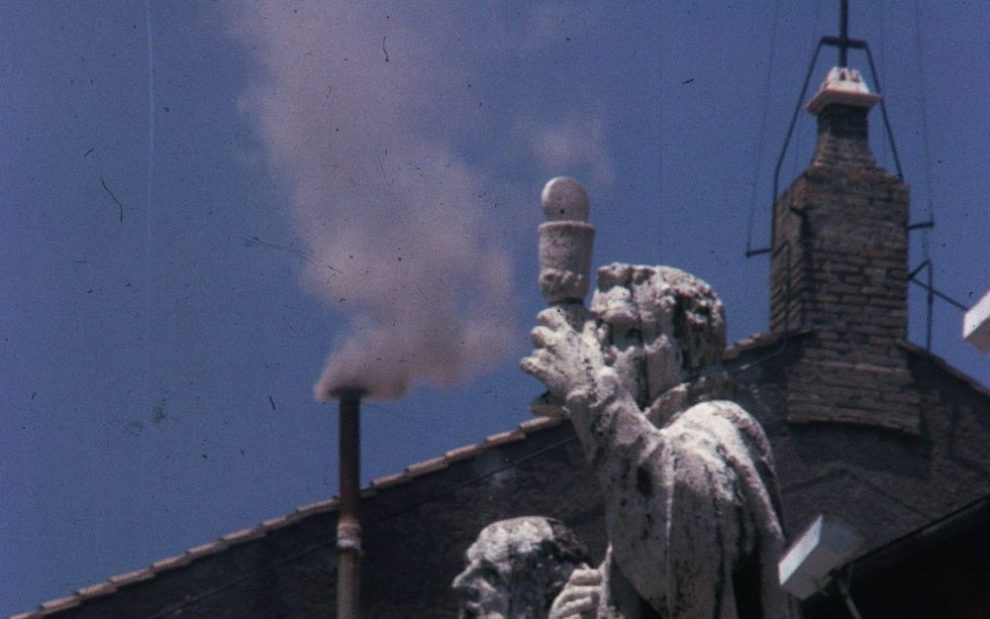Any Catholic with an interest in church politics probably knows about the tradition of “papal smoke” when a new pontiff is chosen. Crowds gather in Vatican City, watching the chimney on the roof of the Sistine Chapel, waiting to see what the conclave decides. White smoke equals “new pope”; black smoke equals “no pope yet.” The sfumata, as it’s called, feels so ancient, so medieval. And the color of the smoke is so suggestive of what it brings—joyful unity or clouded indecision. Where did the papal smoke tradition come from? What does it mean? Like many other inherited ritual elements, the sfumata has undergone much change both in terms of its form and its meaning. And it’s not actually as old as Catholics might think.
In Behind Locked Doors, Frederic Baumgartner demonstrates that the first intentional use of white smoke to signal the conclave’s end was merely nine Popes ago with the choice of Benedict XV (1914). Caused by the burning of the final ballots with other conclave documents, this smoke was distinguishable from the black smoke which used inconclusive ballots and wet straw. The straw method was not always very precise and led to several confusing moments over the years. Thus, the last five elections (since 1963) replaced the “straw technology” with chemicals to produce reliably colored smoke.
The 20th century amplification of white smoke was helpful, since the previous “signal” lacked certainty. At least from the election of Leo XII (1823) until that of Pius X (1903) only unsuccessful ballots were intended to be seen—hence the technological addition of wet straw. Thus, if these crowds saw any smoke at all they might reasonably leave, thinking another ballot necessary. The 1878 conclave highlights the ambiguity: Leo XIII emerged to a mostly empty St. Peter’s Square, since the burning of the final ballots alone had produced enough smoke to be visible that day.
Before the election of Leo XII seeing smoke had no intended meaning. Wet straw was not then added to the ballots, because the purpose was simply burning the ballots. People were informed that a Pope had been elected by bells and cannon shot. Indeed, using smoke at all was then a recent innovation, likely only four or five conclaves old. Like the development of the special stove a century earlier, the first addition of a chimney to the Sistine Chapel in the mid-1700s was a technological innovation to protect Michelangelo’s artwork from smoke damage. Ballots were being burned at least from the election of Martin V (1417) and possibly shortly after their introduction with the election of Boniface VIII (1294). Burning them preserved secrecy—the very reason why conclaves were established.
So, rather than papal smoke being an ancient method of symbolizing the results of a papal election, the sfumata is actually a modern communication method utilizing technology for late medieval secrecy and 18th century art preservation. But a thing’s meaning is different than its origins. Unlike medieval Christians who wouldn’t have seen it, we are free to understand the white smoke as signifying unity, renewal, and hope within the church. We aren’t doing what they did. For, just as with the technologies themselves, interpretation arises from the interaction of practices with lived contexts.
Image: Wikimedia Commons












Add comment